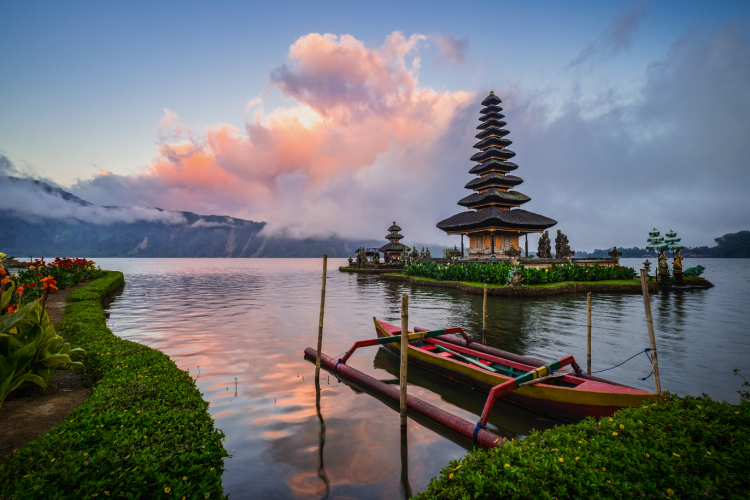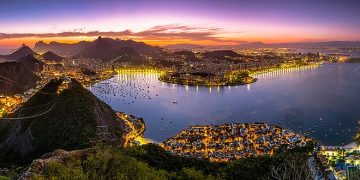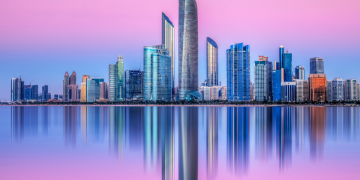Indonesia, an archipelago country in Southeast Asia, is famous for its unique geographical location, rich natural resources, colorful culture and long historical background. This article will reveal the charm and vitality of this country from many aspects such as geographical location, climate characteristics, historical background, economic development, cultural characteristics, tourism resources and international status.
- Geographical location and climatic characteristics
Indonesia is located in southeast Asia, straddling the equator, between the Pacific and Indian Oceans. It consists of 17,508 islands and is the largest archipelagic country in the world. Its land border has a total length of 2,774 km and borders with Papua New Guinea, Malaysia and other countries. The terrain of Indonesia is mainly mountainous and plateau, and many straits and inland seas are formed between the islands, of which Sunda Strait, Malacca Strait, Lombok Strait, etc., are important channels for communication between the two oceans.
Due to its location around the equator, Indonesia has a tropical rainforest climate, with an average annual temperature between 25 and 27 ° C and no four seasons. The north is affected by the northern Hemisphere monsoon, with abundant precipitation from July to September, and the south is affected by the southern Hemisphere monsoon, with abundant precipitation in December, January and February. This unique climatic condition makes Indonesia rich and diverse in natural resources, providing unique conditions for the country’s economic development. - Historical background
Indonesia has a long and rich history. As early as the 3rd to 7th centuries AD, a number of scattered feudal kingdoms were established here. From the end of the 13th century to the beginning of the 14th century, the most powerful feudal empire in Indonesian history was established in Java. However, starting in the 15th century, Indonesia was invaded by European countries such as Portugal, Spain, Great Britain and the Netherlands. Until its occupation by Japan in 1942, Indonesia’s history was full of twists and turns and struggles. After the surrender of Japan in 1945, Indonesia broke out the August Revolution and declared its independence on August 17, establishing the Republic of Indonesia. After many wars and negotiations, Indonesia finally officially established the Republic of Indonesia in 1950, opening a new chapter in the country’s development. - Current economic development
Indonesia’s economic development has made remarkable achievements in recent years. As the largest economy in Southeast Asia, Indonesia’s agriculture, industry and services are all booming.
In terms of agriculture, due to the advantages of geographical location and climatic conditions, Indonesia has a wide variety of agricultural products, including rice, corn, potato and other food crops and rubber, coconut, coffee and other cash crops. These agricultural products not only meet the needs of the domestic market, but also a large number of exports to the international market, making an important contribution to the country’s economic development.
In terms of industry, Indonesia’s manufacturing, mining and construction industries are also growing. Manufacturing, in particular, has become one of the pillar industries of the Indonesian economy. Indonesia’s industrial products cover textile, food processing, wood processing, petrochemical and other fields, and the products are exported to overseas markets.
In the service sector, with the rapid development of Indonesia’s economy and the improvement of people’s living standards, the proportion of the service sector in the national economy has gradually increased. Finance, tourism, education, medical care and other fields have become the focus of the development of the service industry. In particular, the tourism industry, with Indonesia’s unique natural scenery and rich cultural heritage, has attracted a large number of domestic and foreign tourists to travel and tourism, and injected new vitality into the country’s economic development.
Fourth, cultural characteristics
Indonesia’s cultural characteristics are unique and charming. As a multicultural country, Indonesia is home to hundreds of ethnic groups and numerous religious beliefs. Among them, the Javanese constitute the majority of the population, and they have rich cultural traditions and unique art forms. The official language of Indonesia is Bahasa Indonesia, but a variety of national languages and dialects are also widely spoken.
In terms of clothing, the traditional Indonesian clothing is colorful and diverse in style. In Bali, for example, you can see local women wearing traditional costumes with bright colors and unique designs; Men, on the other hand, usually wear a long sleeve jacket and a sand cage with a check pattern. These traditional costumes not only show the aesthetic taste of the Indonesian people, but also reflect their cherish and inheritance of traditional culture.
In terms of food, Indonesian food is known around the world for its rich taste and unique cooking style. Rice is one of the staple foods of Indonesians, who like to cook rice or glutinous rice wrapped in a diamond shape with banana or palm leaves, which is called keduba. In addition, Indonesians also like to eat a variety of noodles, bread and other pasta, as well as rich seafood and tropical fruits. These delicacies not only satisfy the appetite of the Indonesian people, but also become one of the important factors to attract tourists.
Fifth, tourism resources
Indonesia has rich tourism resources, both natural landscape and cultural heritage are unforgettable. Bali is known for its strong religious culture, stunning beaches and abundant water activities; As one of the most historic cities in Indonesia, Yogyakarta has Borobudur, the world’s largest Buddhist temple complex, and other historic sites; Jakarta is a city full of modern atmosphere, where the tropical atmosphere and long history of culture has always attracted tourists to come to explore; In addition, cities such as Surabaya and Bandung also have their own characteristics, offering tourists a diverse travel experience.
Apart from the urban landscape, Indonesia’s natural beauty is also breathtaking. The Sumatran rainforest is one of the oldest in the world, home to tens of thousands of plant species and many rare animals. Lombok is famous for its beautiful beaches and clear waters; Komodo Island attracts adventure lovers with its unique natural scenery; Lake Toba is one of the largest freshwater lakes in Indonesia, and the picturesque lake side is a good place for leisure and vacation.
International status and influence
Indonesia’s status and influence in international affairs are gradually increasing. As the largest economy and populous country in Southeast Asia, Indonesia is playing an increasingly important role in regional and international affairs. Active participation of Indonesia





















